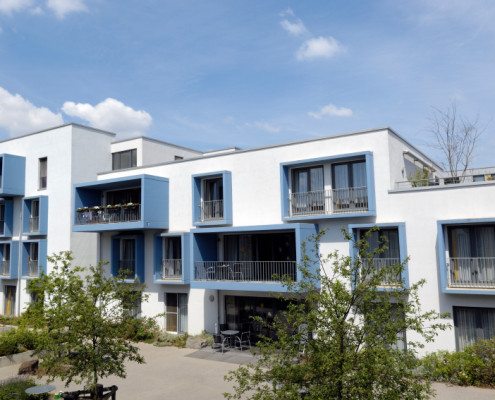The 45L Tax Credit is a powerful incentive for property developers, encouraging energy-efficient construction. It offers developers a tax credit per each qualified dwelling unit that meets specific energy-savings standards. To be eligible, construction or substantial rehabilitation must be initially leased or sold in the tax year in which the credit is to be taken, open amenable tax years are eligible to claim the credit.
Eligible Properties
Qualifying properties include dwelling units designed for occupancy by one family. These properties may include apartments, condominiums, assisted living facilities, student housing, townhouses, and single-family homes. Each unit within the building is eligible for the tax credit.
Projects initially leased in tax year 2022 or before have a limit of 3 stories or less to be able to qualify for the incentive.
Starting in 2023 and later mid-rise and high-rise projects are now eligible to be certified and the projects are no longer limited to the 3 story of less requirement.
Who is the Eligible Contractor?
The eligible contractor is the person or company that owns and has a basis in the qualified energy-efficient home during its construction. Third-party contractors are not eligible contractors.
An eligible contractor must obtain certification from an independent eligible certifier before claiming the energy home credit with respect to the dwelling unit. An eligible certifier is a person not related to the eligible contractor who has been accredited or otherwise authorized by the Residential Energy Services Network (RESNET) or an equivalent rating network. The certifier conducts computer modeling and on-site testing and prepares a certification package with a declaration that under penalties of perjury, the certifier believes that the facts presented in the certification are true, correct and complete. The fee for certification is typically charged on a per-unit basis.
| Requirements | Pre-IRA (Tax Year 2022 and prior) | Post-IRA (Tax Year 2023 through 12/31/2032) |
|---|---|---|
| Qualification Requirements | Units must meet energy efficiency standards 50% higher than the 2006 IECC standards, with 10% of the saving being achieved from the building envelope | Units may be certified under either the Energy Star new Homes and multifamily programs and for an increased credit amount the DOE- Zero Energy Ready Homes Program (ZERH) |
| Height Requirements | Buildings must be 3 stories or less | No limitation of stories for the energy star program. Limited to 5 Stories or Less for ZERH |
| Tax Credit Amount if project MEETS Prevailing Wage | $2000/per unit | $2500 for Energy Star $5000 for ZERH |
| Tax Credit Amount if project DOES NOT MEET Prevailing Wage | $2000/per unit | $500 for Energy Star $1000 for ZERH |
| Tax Year Eligibility | Eligible for new homes initially sold or leased until 12/31/2022 and prior open amendable tax years | Eligible for new homes initially sold or leased after 12/31/2022 It is necessary that a pre drywall inspection be performed so it is important to start the process as early as possible even as soon as the pre construction/design phase. |
| Requirements | Pre-IRA (Tax Year 2022 and prior) | Post-IRA (Tax Year 2023 through 12/31/2032) |
|---|---|---|
| Qualification Requirements | Units must meet energy efficiency standards 50% higher than the 2006 IECC standards, with 10% of the saving being achieved from the building envelope | Units may be certified under either the Energy Star new Homes and multifamily programs and for an increased credit amount the DOE- Zero Energy Ready Homes Program (ZERH) |
| Height Requirements | No height restriction for SFH | No limitation of stories for the energy star program. Limited to 5 Stories or Less for ZERH |
| Tax Credit Amount | $2000/per unit | **$2500 for Energy Star $5000 for ZERH |
| Tax Year Eligibility | Eligible for new homes initially sold or leased until 12/31/2022 and prior open amendable tax years | Eligible for new homes initially sold or leased after 12/31/2022 It is necessary that a pre drywall inspection be performed so it is important to start the process as early as possible even as soon as the pre construction/design phase. |
**Prevailing wage is not a requirement for Single Family Homes.
Step 1
Initial Consultation - Identifying Opportunities
Step 2
Technical Feasibility Review
Step 2
Step 3
Energy Modeling and Training
Step 4
Preconstruction Support
Step 4
Step 5
Pre-Drywall Inspections - A Critical Step
Step 6
Ongoing Support and Additional Certifications
Step 6
Step 7
Final Site Inspections and Deliverables
Step 8
Submittals to Governing Authorities
Step 8
Step 9
Tax Credit Claiming
Contact Us
"*" indicates required fields



